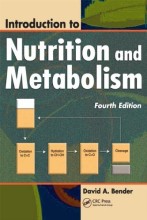Summary: Food Digestion: Nutrient Breakdown And Absorption
- This + 400k other summaries
- A unique study and practice tool
- Never study anything twice again
- Get the grades you hope for
- 100% sure, 100% understanding
Read the summary and the most important questions on Food digestion: nutrient breakdown and absorption
-
1 NBA1 (molecular aspects of) protein digestion and absorption
This is a preview. There are 25 more flashcards available for chapter 1
Show more cards here -
Which proteins can be found in our GI tract?
Dietary proteins- different sources (meat, dairy, legumes, nuts etc)
Endogenous proteins- salivary and gastric secretions
- pancreatic and bile secretions
- small intestinal secretions
- sloughed epithelial cells
- mucus
- microbial protein
-
Which enzymes are there for the protein digestion
Endopeptidases - internal bonds
Exopeptidases - amino acid from the carboxy- or amino- terminus- Pepsin - endo
- Trypsin - endo
- Chymotrypsin - endo
- Elastase - endo
- Carboxypeptidase A - exo
- carboxypeptidase B - exo
- Aminopeptidases - exo
-
But .... Enzyme digestion is not exactly straight forward, why?
- Specificity for a cleavage site
- but not all cleavage sites on a protein are always utilised by an enzyme
- peptide composition from hydrolysis is difficult to predict, it depends on selectivity of enzyme towards cleavage site
spontaneous non-enzymatic breakdown- whey protein hydrolysate: 13/77 identified peptides from a-specific cleavage, even in mild conditions
- Specificity for a cleavage site
-
What is the rol of PEPT1 in the protein absorption?
Peptide transport proteinPEPT1 - Transport/absorption of di- &
tri-peptides - Very broad substrate
specificity - >400
dipeptides and >8000 tripeptides - Low affinity
- Secondary active transport (no direct ATP)
NHE3 is important for the proton gradient --> Na+ wil go into the cell and H+ will go out of the cell - Transport/absorption of di- &
-
What is the role of the AA transport system for protein absorption?
- Many different
transporters - Transporters have:
stereospecificity -->L-amino acids- substrate
specificity --> multiple amino acids - overlap in
specificity --> multipletransporters perAA - Mechanism:
facilitated diffusion - secondary active transport
- Many different
-
Which inherited diseases influence the absorption?
Hartnup disorder:Defective intestinal transport:B0AT1 (neutralAA )- Effect: poor
nutrition results inpellagra-like skin changes,cerebellar ataxia, andpsychiatric abnormalities Treatment : sometimes only a high protein diet!
Cystinuria :Defective intestinal transport: rBAT/b0,+AT (cationicAA )- Effect: kidney stones made of
Sistine (transporter also absent in kidneys forreabsorption ) Treatment : multiple options to prevent kidney stones
-
Which parts of the intestine are involved in the absorption (along the intestine)
Duodenum (4)
Jejunum (1)
Ileum (2)Proximal colon (5)
Distal colon (3) -
What happens in the after protein absorption - in enterocytes?
Di & tripeptides --> AA- by intracellular peptidases
Free amino acids (AA)- metabolism (in enterocyte)
- glutamine, glutamate and aspartate oxidised
- protein synthesis
- transport over basolateral membrane --> blood
-
What happens after protein absorption in the circulation?
Release of dietaryprotein-derived amino acids incirculation - From
intestinal capillaries toperipheral circulation - via portaal vein to liver
- first pass
metabolism -splanchnic amino acidextraction ± gut + liver
Fast vs.Slow proteinconcept - whey vs casein
- whey has a high increase and after that a decrease
- casein stays 'stable'
- whey is better than casein
- influence
anabolic effect
-
What are the key points in the fast vs slow protein concept
Speed of proteindigestion depends not only onproteins sources, but also on food matrix, texture,technological processes andassociated calories Fast digestive proteins areefficient forimproving muscle mass and musclefunction in olderindividuals through thepostprandial changes in amino acidavailability - The
anabolic effect of fastdigestive proteins , especially whey protein, isamplified byphysical exercise
- Higher grades + faster learning
- Never study anything twice
- 100% sure, 100% understanding
Topics related to Summary: Food Digestion: Nutrient Breakdown And Absorption
-
NBA1 (molecular aspects of) protein digestion and absorption
-
NBA2 Basic aspects of the small intestine: anatomy and physiology
-
NBA3 (Molecular aspects of) carbohydrate + lipid digestion and absorption
-
NBA4 Food matrix and digestion: dietary fiber
-
NBA5 Food matrix and digestion: starch and sugars
-
NBA6 Nutrient digestion + absorption + nutrient sensing
-
NBA7 Food matrix and digestion: lipids
-
NBA8 Food matrix and digestion: proteins
-
NBA9 Food matrix and digestion: bioactive compounds
-
NBA10 comparative physiology: bioactive compounds
-
NBA11 Small intestine and diseases
-
NBA12 nutrient sensing






























